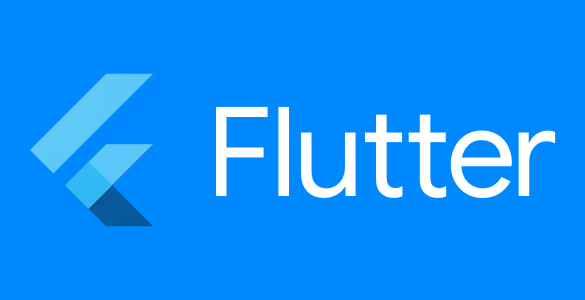
Learn How to Build and Publish Flutter Plugins in 30 Minutes!
Learn How to Build and Publish Flutter Plugins in 30 Minutes!
Have you ever found yourself needing a feature for your Flutter app that isn’t quite covered by existing plugins? Maybe you’ve been dreaming of creating a custom plugin to unlock unique functionality? The good news is that building and publishing your own Flutter plugin isn’t as intimidating as it sounds in fact, you can get started in just 30 minutes!
At Appcelly, we love helping businesses push boundaries with Flutter. In this guide, we’ll walk you through the process of creating a Flutter plugin step by step, whether it’s to access platform-specific features or add custom functionality to your app.
Let’s dive in!
What Are Flutter Plugins and Why Should You Care?
Understanding Flutter Plugins
Flutter plugins are packages that provide a bridge between Flutter (Dart) and platform-specific APIs (Android and iOS). They allow you to access native device features, like the camera, GPS, or sensors, directly from your Flutter app.
Some well-known plugins include:
camera: For accessing device cameras.firebase_auth: For Firebase authentication.path_provider: For file storage paths.
But what happens when you need functionality that doesn’t exist yet? That’s where custom plugins shine.
Why Should Businesses Use Custom Plugins?
- Extend App Functionality: Add unique features tailored to your business needs.
- Save Development Time: Use plugins to reuse and share common code across projects.
- Stay Ahead of the Curve: Custom plugins let your app stand out with capabilities your competitors may not have.
Tools You Need to Get Started
Building a Flutter plugin is straightforward, but you’ll need a few tools in place before starting:
- Flutter SDK: Ensure you have Flutter installed and set up.
- IDE: Use an IDE like Visual Studio Code or Android Studio.
- Basic Knowledge: Some familiarity with Dart and native development (Java/Kotlin for Android and Swift/Objective-C for iOS) is helpful.
Pro Tip: Don’t worry if native code isn’t your strong suit! We’ll break it down into simple steps, and our team can help with more complex requirements.
Step 1: Create Your Plugin Project
The first step is to set up your plugin project. Flutter makes this easy with its built-in command-line tools.
How to Create a Plugin Project
- Open your terminal and run:
flutter create --template=plugin plugin_name - Replace
plugin_namewith the name of your plugin (e.g.,flashlight_plugin). - This command generates a file structure for your plugin:
lib/: Contains the Dart interface.android/: Holds Android-specific code.ios/: Holds iOS-specific code.
Take a moment to explore the generated files—they’ll be your starting point for the plugin’s functionality.
Step 2: Add Native Functionality to Your Plugin
Now comes the exciting part: adding native code to your plugin.
Android Implementation
- Navigate to
android/src/main/.../PluginClass.java(or.ktif you prefer Kotlin). - Add the native code to implement your desired functionality.
For example, if you’re building a flashlight plugin, here’s a sample Kotlin method:
private fun toggleFlashlight(enable: Boolean) {
val cameraManager = context.getSystemService(Context.CAMERA_SERVICE) as CameraManager
val cameraId = cameraManager.cameraIdList[0]
cameraManager.setTorchMode(cameraId, enable)
}
iOS Implementation
- Navigate to
ios/Classes/PluginName.m(or.swiftif you prefer Swift). - Add the equivalent functionality for iOS.
Here’s a Swift snippet for toggling the flashlight:
func toggleFlashlight(enable: Bool) {
guard let device = AVCaptureDevice.default(for: .video),
device.hasTorch else { return }
try? device.lockForConfiguration()
device.torchMode = enable ? .on : .off
device.unlockForConfiguration()
}
What If You’re Stuck?
If writing native code feels daunting, don’t worry! This is where partnering with experts like us can save time and ensure everything works flawlessly.
Step 3: Expose the Functionality to Flutter Through Dart
Once the native functionality is ready, it’s time to make it accessible to your Flutter app.
How to Use Method Channels
In the lib/ folder, you’ll create a Dart API that communicates with the native code using Flutter’s MethodChannel.
Here’s how you can toggle the flashlight:
import 'package:flutter/services.dart';
class FlashlightPlugin {
static const MethodChannel _channel = MethodChannel('flashlight_plugin');
static Future<void> toggleFlashlight(bool enable) async {
await _channel.invokeMethod('toggleFlashlight', {"enable": enable});
}
}
Step 4: Test Your Plugin
Testing is a crucial step to ensure your plugin works seamlessly across devices.
Unit Testing in Flutter
Write tests for the Dart API to verify its behavior. Use Flutter’s built-in testing tools:
void main() {
test('Flashlight toggles correctly', () async {
await FlashlightPlugin.toggleFlashlight(true);
expect(/* some condition */, true);
});
}
Integration Testing
Test the plugin on both Android and iOS devices to ensure it works as expected on real hardware.
Pro Tip: Set up a CI/CD pipeline to automate plugin testing and catch potential issues early.
Step 5: Publish Your Plugin
Now that your plugin is working, it’s time to share it with the world.
How to Prepare for Publishing
- Add a detailed
README.mdwith usage instructions and examples. - Ensure your plugin has proper documentation and a demo app in the
/examplefolder.
Publishing to pub.dev
- Run:
flutter pub publish - Follow pub.dev’s guidelines for plugin approval.
Pro Tip: Keep your plugin updated with new features and bug fixes to maintain its relevance in the Flutter community.
Conclusion
Building a Flutter plugin might sound complex, but with the right steps and tools, it’s surprisingly manageable, even in just 30 minutes! From setting up the project to writing native code and publishing your work, you now have the blueprint to create your own plugin.
At Your App Development Company, we specialize in developing custom Flutter plugins and apps tailored to your business needs. Whether you’re looking to integrate unique features or build a high-performance app, we’re here to help.
Ready to create something amazing? Contact us today for a free consultation, and let’s turn your ideas into reality.